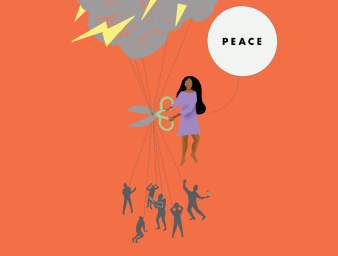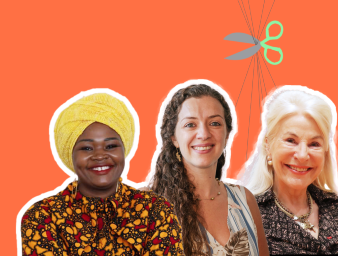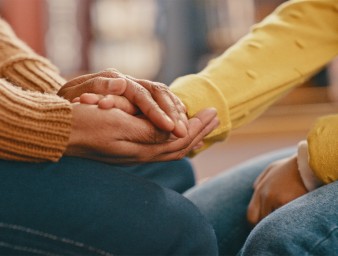Small arms: A disproportionate impact on women
25 November 2014

Knowledge is power, and Dr. Anna Alvazzi del Frate believes that information on the way small arms proliferation effects women and girls can help save lives.
“We believe that knowledge is the key to the development of effective policies,” she said. “Through providing independent information and analysis, [we] contribute to the international efforts…to constrain the proliferation of light arms and weapons and contribute to safer communities around the world.”
Alvazzi is the research director for the Small Arms Survey, an NGO that looks at the proliferation and dangers brought on by the misuse of small arms across the world. The organization monitors all aspects of small arms violence and acts as a resource for governments and others with information on the issue.
This year the group took a closer look at how gun violence affects the rights of women in their report, “Small Arms Survey: Women and Guns”.
“We have a good collaboration with the OHCHR,” she said. “As a reference for any step in our work, we use the methodologies from the office such as the Human Rights Indicators. We also keep them informed of our progress of our research by sharing our publications and inviting officers to meeting where we present our results.”
The proliferation of fire arms as a women’s safety issue has gained international clout, Alvazzi said. The end of 2014 will see the Arms Trade Treaty go into effect. The Treaty, which has been ratified by 53 States, contains provisions to ensure that the spread of fire arms does not have a negative impact on violence against women.
“This recognition of the connection between violence against women and fire arms is finally advancing this important agenda on women’s equality,” she said.
The effect of small arms violence on women is profound, Alvazzi said. Leaving aside armed conflicts, the use of guns in domestic violence situation, particularly in “stable” areas like Europe, leaves a disproportionate number of women as victims, she said.
This, combined with the under reporting of violent deaths, particularly those of women, makes her work so relevant to human rights, she said.
“We believe that we contribute in documenting patterns and trends of violence against women and this is crucial information for those who can actually implement programmes and policies in this direction,” Alvazzi said.
The data and information gathered by Small Arms Survey have informed efforts by the UN Human Rights Office in several areas, including the promotion of accountability for gender-motivated killings of women.
This story is published as part of the 16 Days of Activism Against Gender-Based Violence, which runs every year from 25 November (the International Day for the Elimination of Violence Against Women) to 10 December (Human Rights Day). The international campaign, calls for the elimination of violence against women and invites everyone to take action against it.
Women’s rights are now acknowledged as fundamental human rights. Discrimination and acts of violence against women are at the forefront of the human rights discourse.
The Convention on the Elimination of All Forms of Discrimination against Women (CEDAW) came into force in 1981 and its Committee was established in 1982. The Convention, often described as an international bill of rights for women, has almost achieved universal ratification. An Optional Protocol to the Convention was adopted in 1999.
25 November 2014



